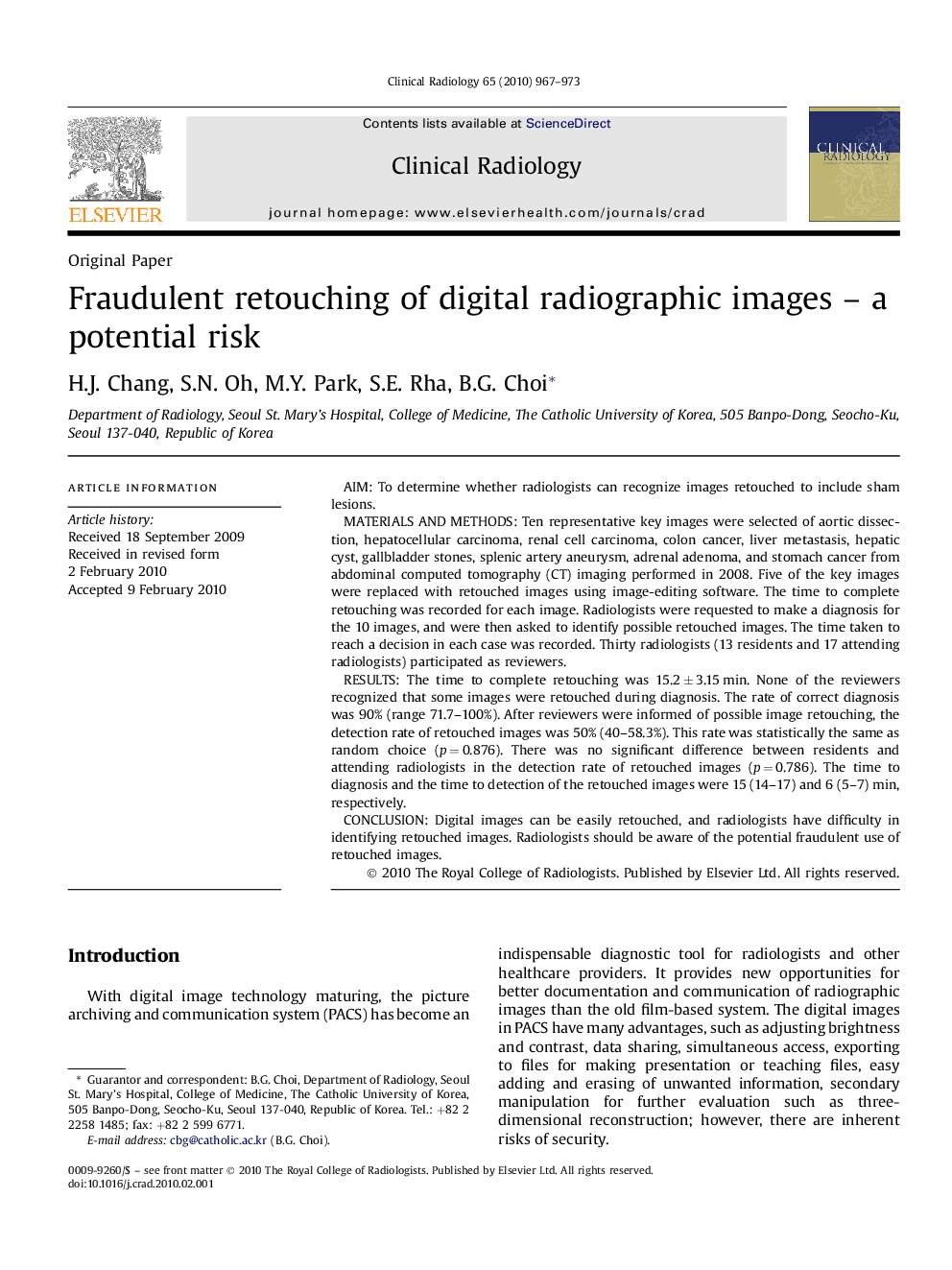| Article ID | Journal | Published Year | Pages | File Type |
|---|---|---|---|---|
| 3982295 | Clinical Radiology | 2010 | 7 Pages |
AimTo determine whether radiologists can recognize images retouched to include sham lesions.Materials and methodsTen representative key images were selected of aortic dissection, hepatocellular carcinoma, renal cell carcinoma, colon cancer, liver metastasis, hepatic cyst, gallbladder stones, splenic artery aneurysm, adrenal adenoma, and stomach cancer from abdominal computed tomography (CT) imaging performed in 2008. Five of the key images were replaced with retouched images using image-editing software. The time to complete retouching was recorded for each image. Radiologists were requested to make a diagnosis for the 10 images, and were then asked to identify possible retouched images. The time taken to reach a decision in each case was recorded. Thirty radiologists (13 residents and 17 attending radiologists) participated as reviewers.ResultsThe time to complete retouching was 15.2 ± 3.15 min. None of the reviewers recognized that some images were retouched during diagnosis. The rate of correct diagnosis was 90% (range 71.7–100%). After reviewers were informed of possible image retouching, the detection rate of retouched images was 50% (40–58.3%). This rate was statistically the same as random choice (p = 0.876). There was no significant difference between residents and attending radiologists in the detection rate of retouched images (p = 0.786). The time to diagnosis and the time to detection of the retouched images were 15 (14–17) and 6 (5–7) min, respectively.ConclusionDigital images can be easily retouched, and radiologists have difficulty in identifying retouched images. Radiologists should be aware of the potential fraudulent use of retouched images.
